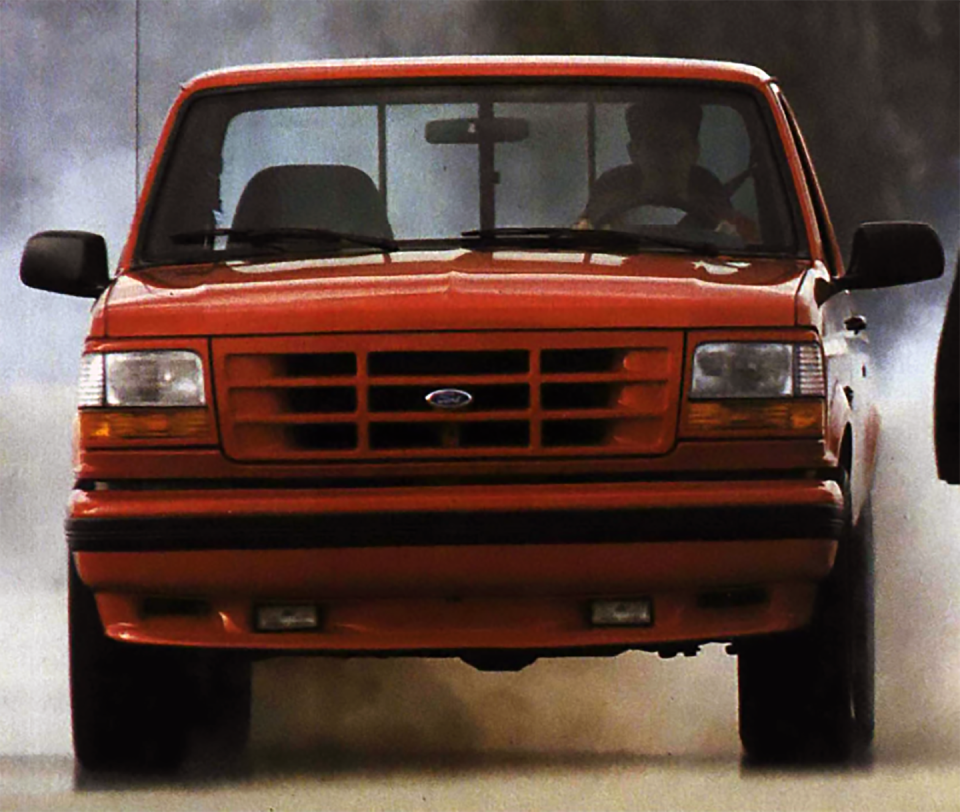Lightning Struck Ford's F-150 Twice. This Time, I Think It Missed

It's obvious that an electric F-150 should be named Lightning. I tweeted as much more than a year ago. But at the time, I assumed that Ford would use the advantages inherent to an electric vehicle—a low center of gravity, balanced weight distribution, and instant torque—to create a monster of a sport truck with the modern F-150 Lightning.
I should have known better.
Ford made its current strategy clear when it launched the Mustang Mach-E, a very good electric vehicle with a deeply silly name. It's going to mine the heritage of its most iconic vehicles for every dollar, dime, and penny that it's worth, but it appears the company feels little obligation to stay true to what those brands once stood for.

"Lightning" once stood for a pickup truck with serious power and sports-car-inspired handling. It relied on that classic muscle-car formula—a big engine in a small car (or truck in this case)—and used a lowered and stiffened suspension to domesticate the F-150's agrarian chassis. In 1993, the original SVT F-150 Lightning posted an impressive 0.88 g of lateral grip in Car and Driver skidpad testing. A second generation followed in 1999 with a supercharged V-8 that yanked the Lightning to 147 mph. About that truck, Steven Cole Smith wrote, "There is just no way to make a half-ton solid-rear-axle pickup weighing 4696 pounds handle like a sports car. But Ford has come surprisingly close."
Ford will point to this truck's 563 horsepower and claimed zero-to-60-mph time in the mid-four seconds to say that this third Lightning packs the performance credibility of the earlier trucks. But big power and quick acceleration are easy to come by these days. (Plus, 563 horsepower hardly gets the heart racing in this power-drunk moment.) Ford appears to have left a lot on the table when it comes to making this Lightning corner like a car. This is less an affront to automotive enthusiasts and more of a missed opportunity on Ford's part. The brilliant engineers from Ford's disbanded SVT performance group could have made magic throwing air springs, magnetorheological dampers, sticky summer tires, and advanced electronic chassis controls at the Lightning's independent suspension.
An electric F-150 marks a watershed moment for the EV movement. Ford is signaling that it thinks mass-market buyers are ready to trade their V-6 and V-8 engines for electric motors, and I think they are absolutely right. But there's another group of F-150 owners that will be the last holdouts in making this transition. You won't reach those people with reason or appeals to the conscience. Instead, you need something with 800-plus horsepower that can drop a Hellcat at a traffic light, hang with a Porsche 911 in the twisties, and out-tow any light-duty Silverado to get the skeptics interested and excited about EVs. Unless Ford isn't showing us everything it's got planned for the Lightning, the lack of a $100,000 street-performance version feels like low-hanging fruit left on the vine.
Ford's sport truck was a lightning rod for debate among enthusiasts in its prime, too. For decades, Car and Driver editors have picked our 10Best award winners by grading vehicles on a 100-point scale. In 2001, Patrick Bedard gave the Lightning a three. Brock Yates gave it an 85. This new Lightning—an electric F-150 aimed at mainstream buyers of America's most popular vehicle—seems less likely to elicit such strong and polarized opinions, and that's a shame.
You Might Also Like

 Yahoo Autos
Yahoo Autos 